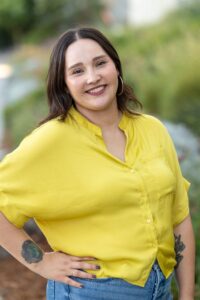 For Irene Garcia, the Bay Area isn’t just where she lives — it’s who she is. “I was born and raised in San Francisco,” she says. “Giving back to my community is part of who I am to my core. For me, working here, living here, and breathing here is just natural.”
For Irene Garcia, the Bay Area isn’t just where she lives — it’s who she is. “I was born and raised in San Francisco,” she says. “Giving back to my community is part of who I am to my core. For me, working here, living here, and breathing here is just natural.”
Irene’s deep connection to her community brought her to our Food Bank nearly 11 years ago. Starting as a neighborhood representative, she supported our partners in Bayview-Hunters Point and Visitacion Valley then eventually San Rafael and Novato. Over the years, she’s continually found new ways to serve her neighbors and expand her impact with us. Two years ago, Irene became the Food Bank’s Associate Director of Community Building, where she’s helping to take on one of our most exciting and transformative initiatives: Community Markets.
Co-developed with our dedicated partners, Community Markets reimagine food assistance to better meet the needs of participants. These markets look and feel like grocery stores, allowing individuals to browse and choose nutritious food items in a dignified setting. They also connect individuals to vital services that address the root causes of hunger.
“Ending hunger isn’t just about handing out food — it’s about lifting folks out of poverty,” Irene says. “If you’re only managing hunger, you’re not solving the problem. Combining food assistance with wraparound services is how we support people in building stable, thriving lives.”
The markets are designed with convenience and accessibility in mind, featuring permanent or semi-permanent indoor locations with extended hours. They will be open at least two days a week and will help support participants who previously relied on Pop-Up Pantries. This reflects our commitment to serving as many people as possible as all Pop-Up Pantries close by June 2025.
Irene is grateful to work alongside a passionate and motivated team dedicated to helping food assistance in San Francisco and Marin evolve to meet the community’s changing needs. “Working with people who are just as collaborative and committed to innovating, finding solutions, and making things better is why I’ve stayed [at the Food Bank] for so long,” she says.
The Community Markets program is just one example of how all of us — from the Food Bank to community partners and supporters like you — are working together to transform our services and find lasting solutions to the root causes of hunger.


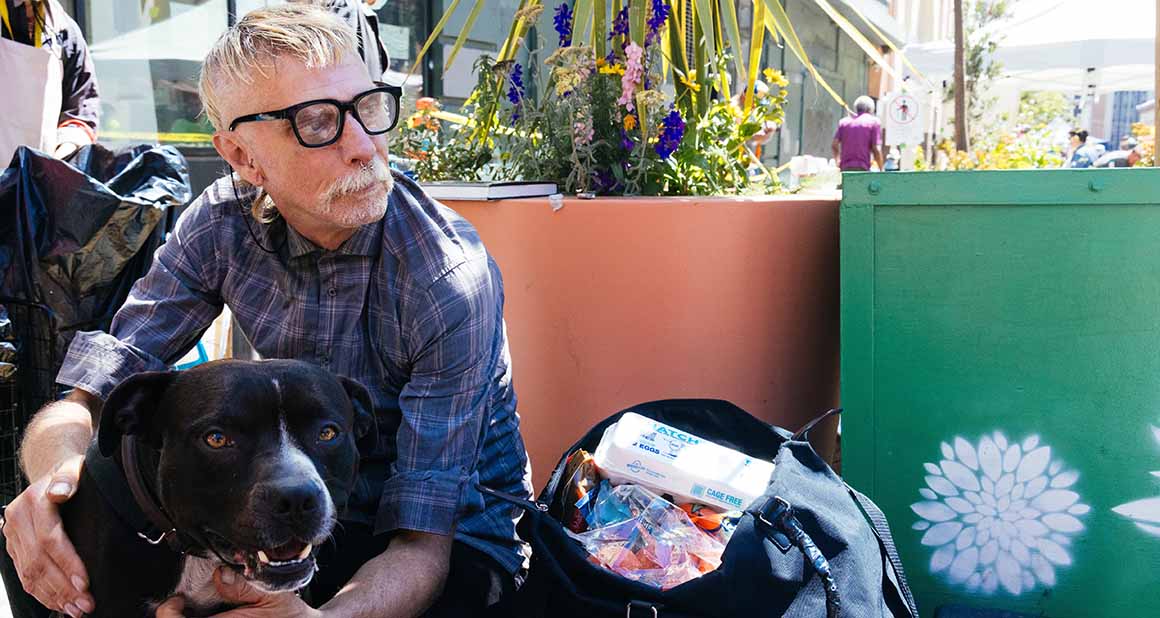
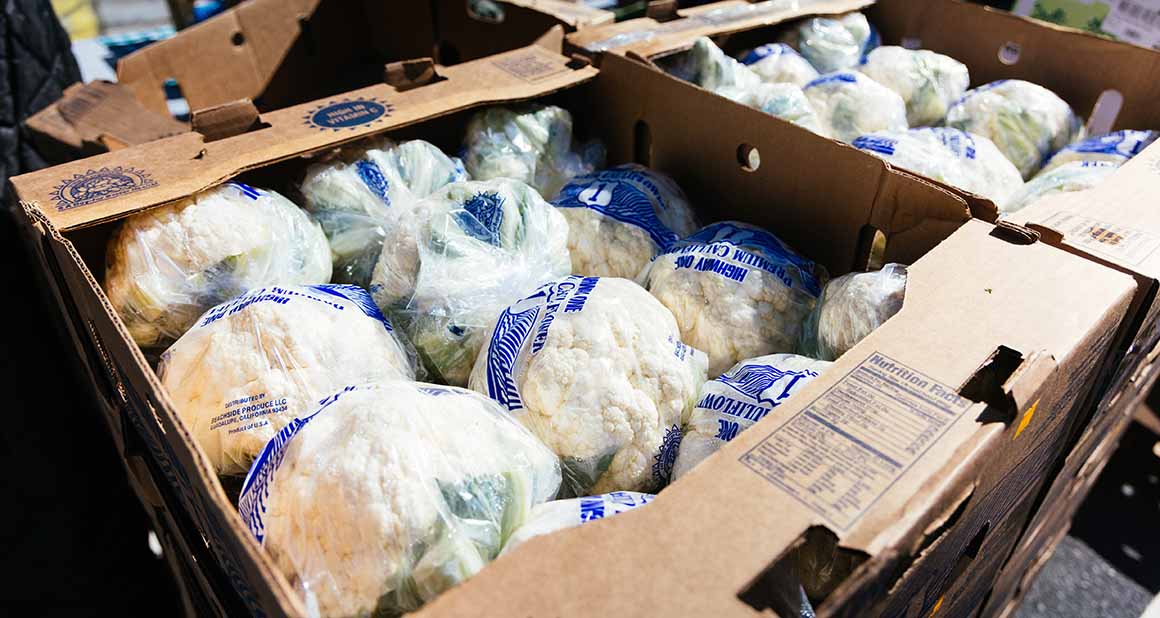 During this period, he rescued le Roi — emaciated and severely abused — from the streets. Nursing le Roi back to health became his mission. “I put him on a high protein, high caloric, high fat diet,” Todd said. With the money the pantry saved him on groceries, he was able to buy quality dog food. Fully recovered, le Roi now “picks up his own leash and walks himself. He plays basketball and body surfs,” Todd beamed.
During this period, he rescued le Roi — emaciated and severely abused — from the streets. Nursing le Roi back to health became his mission. “I put him on a high protein, high caloric, high fat diet,” Todd said. With the money the pantry saved him on groceries, he was able to buy quality dog food. Fully recovered, le Roi now “picks up his own leash and walks himself. He plays basketball and body surfs,” Todd beamed.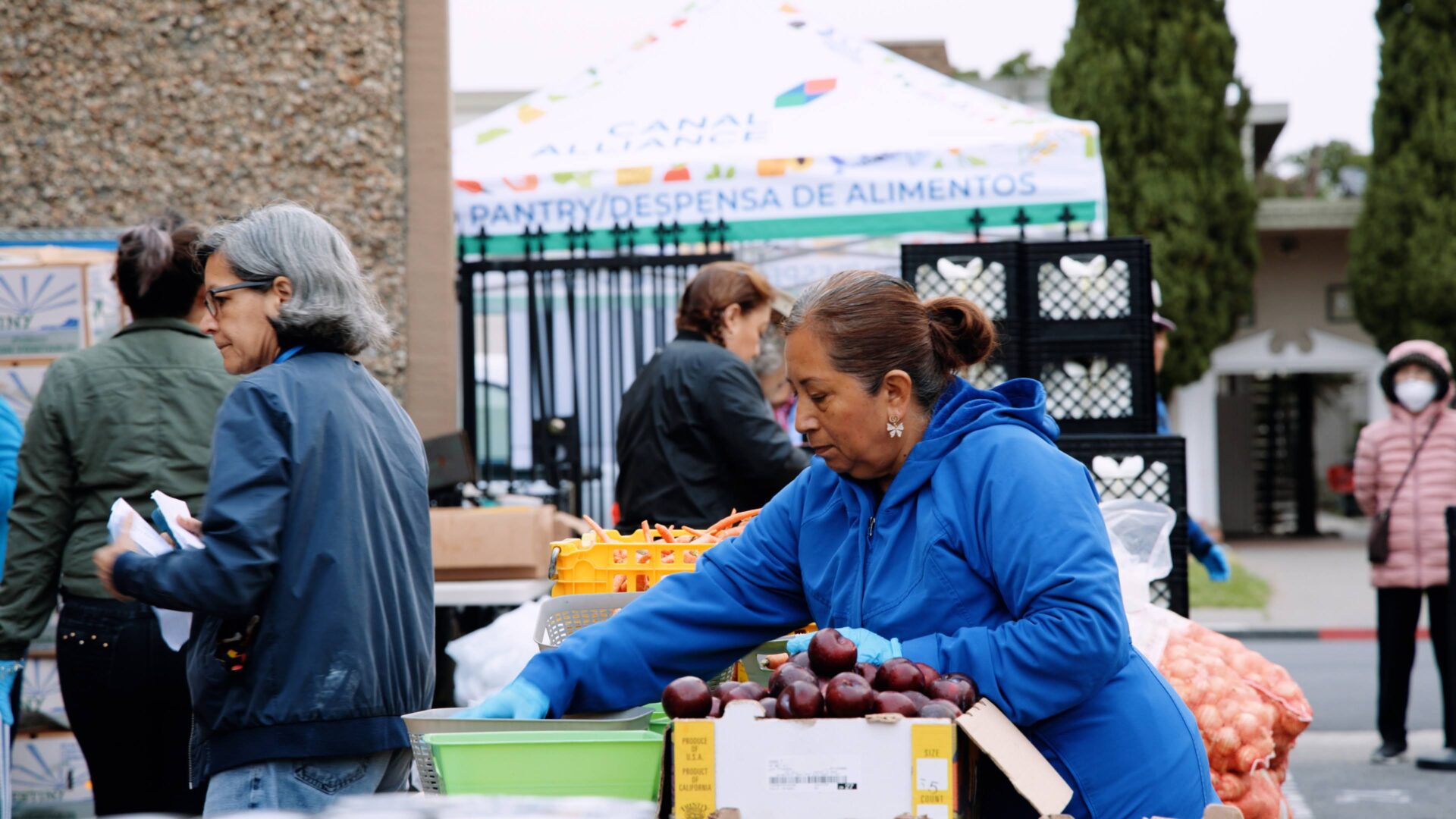
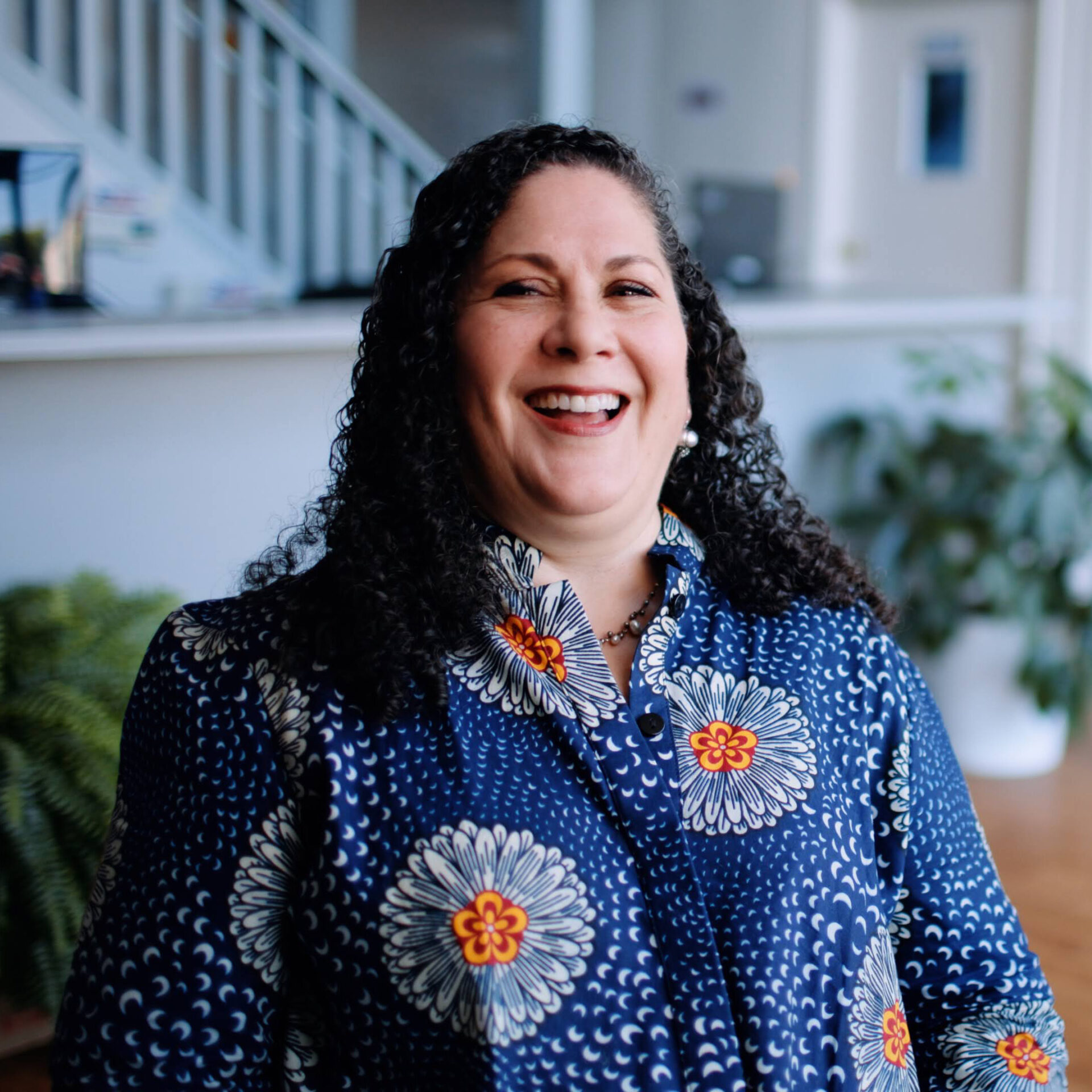
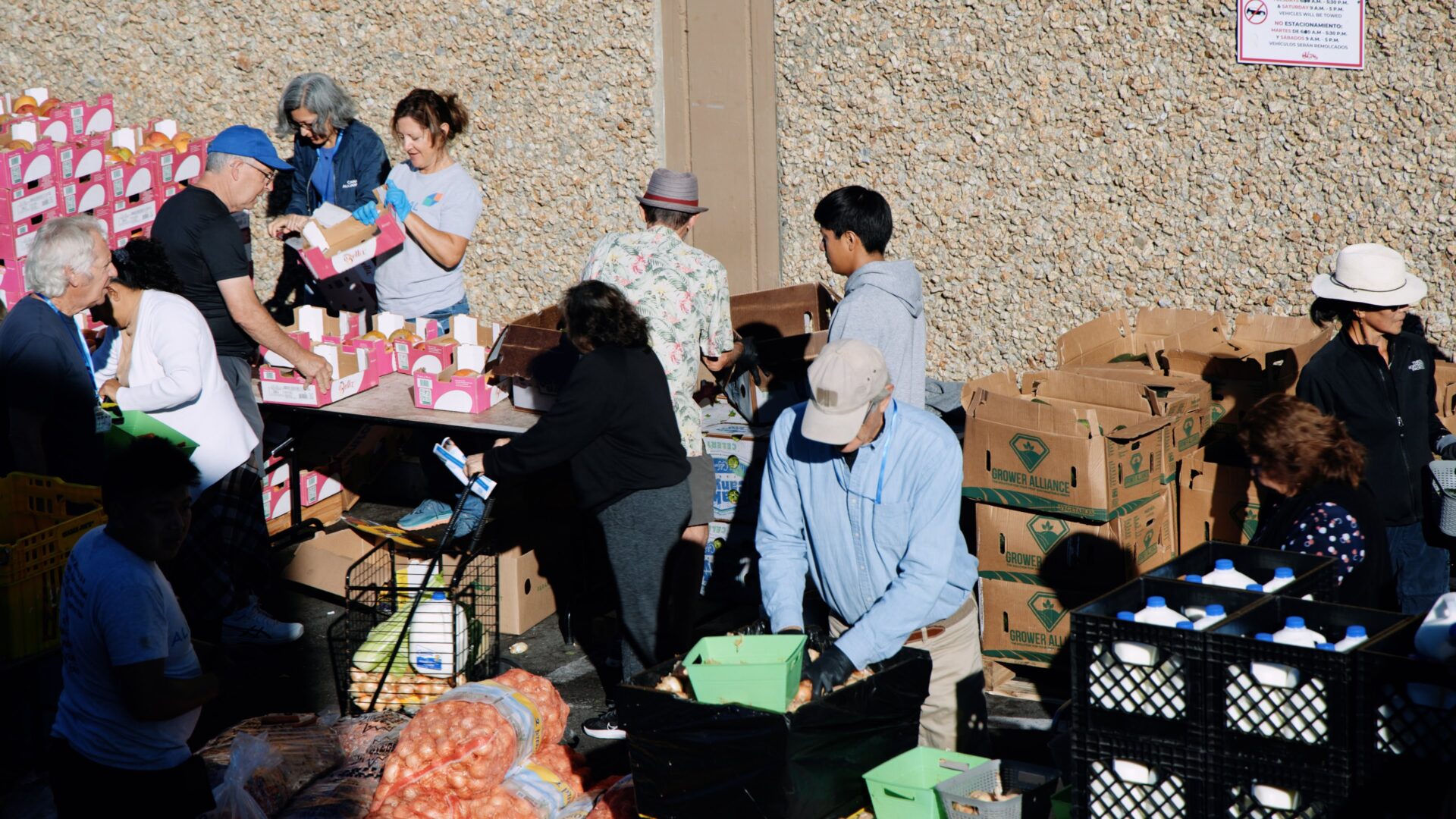

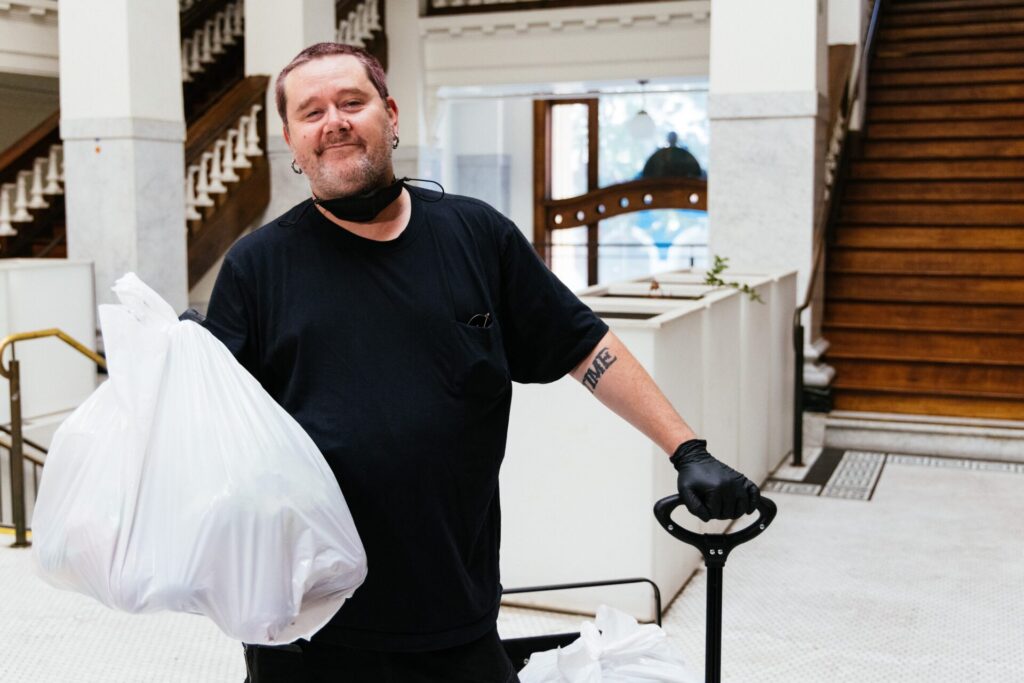
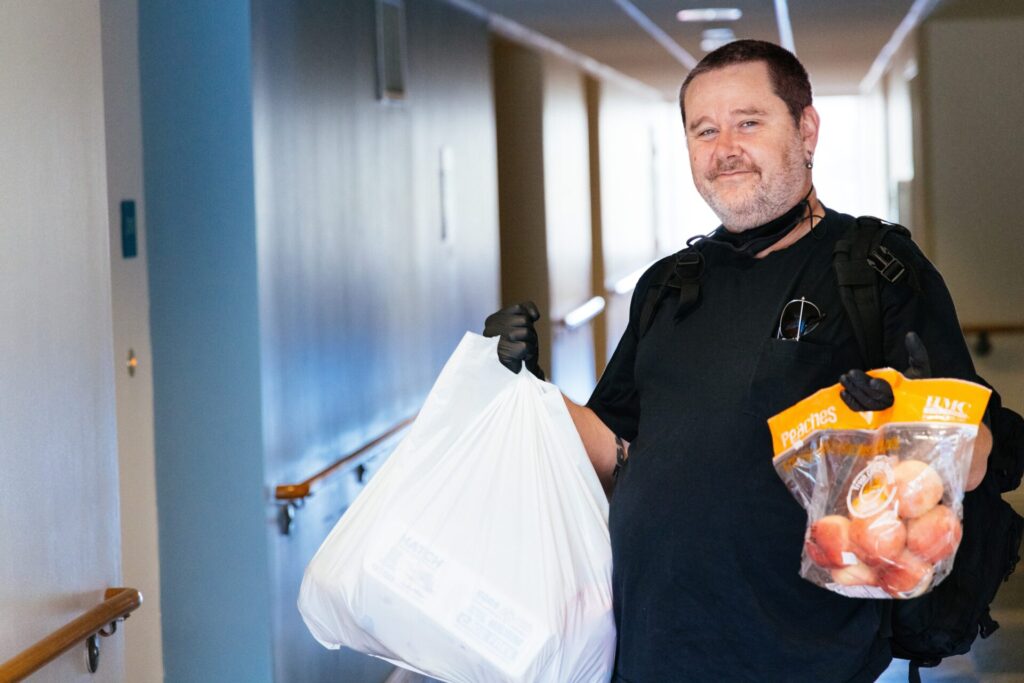
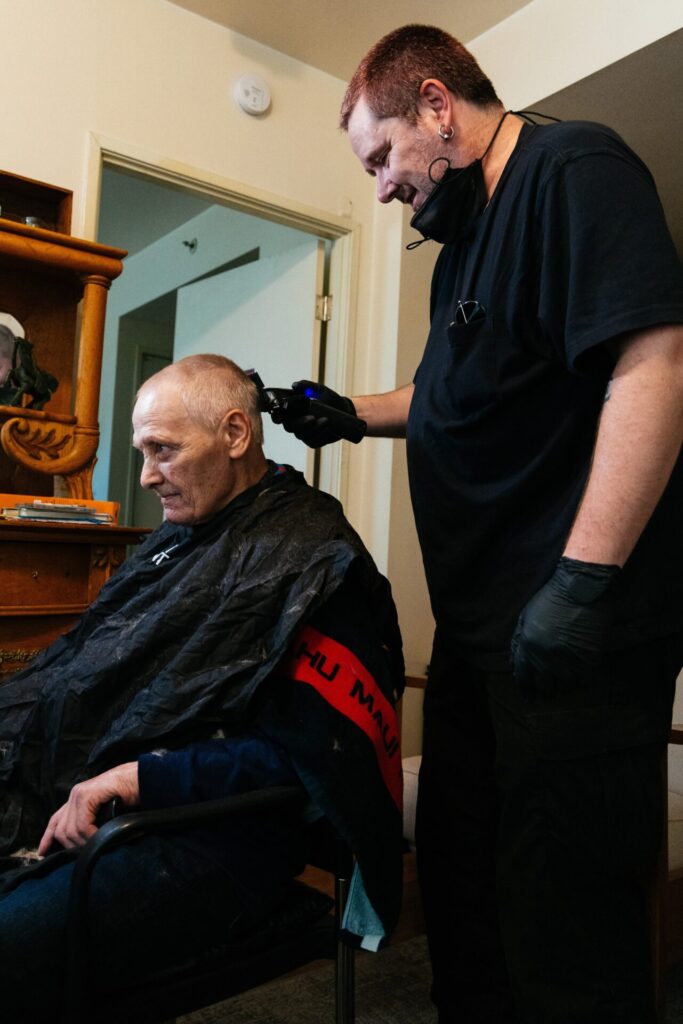
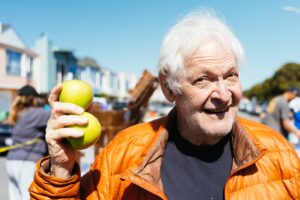 Once a week, a familiar face stops by a neighborhood food pantry in the Richmond district for an afternoon volunteer shift: coordinating the check-in process, breaking down cardboard, and helping share groceries with hundreds of neighbors each week.
Once a week, a familiar face stops by a neighborhood food pantry in the Richmond district for an afternoon volunteer shift: coordinating the check-in process, breaking down cardboard, and helping share groceries with hundreds of neighbors each week. 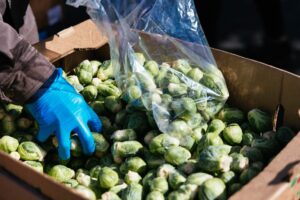 sense that “the sky was falling.”
sense that “the sky was falling.” 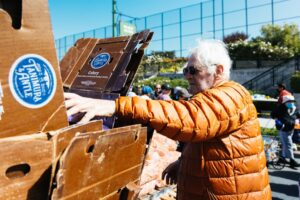 Gary lives on his pension income – so even before record inflation hit, his pre-pandemic grocery routine involved walking to a variety of stores and markets to get the best deals and buy food in bulk. The health risks of the pandemic made this routine impossible for him, but home-delivered Food Bank groceries helped Gary offset the pressure on his budget and stay nourished with fresh vegetables.
Gary lives on his pension income – so even before record inflation hit, his pre-pandemic grocery routine involved walking to a variety of stores and markets to get the best deals and buy food in bulk. The health risks of the pandemic made this routine impossible for him, but home-delivered Food Bank groceries helped Gary offset the pressure on his budget and stay nourished with fresh vegetables. 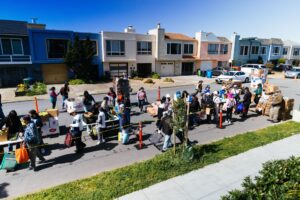 network of support – friends, neighbors and groceries from the Food Bank – Gary was able to stay healthy and safe during the height of the pandemic. But he knows not everyone had that good fortune.
network of support – friends, neighbors and groceries from the Food Bank – Gary was able to stay healthy and safe during the height of the pandemic. But he knows not everyone had that good fortune.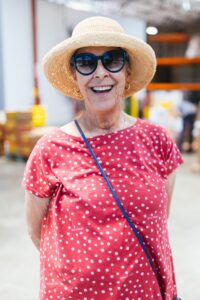 Carolyn Golden’s relationship with the Food Bank goes way back – back to the beginning, in fact. Prior to the merge of the Marin Food Bank and the San Francisco Food Bank in 2011, Carolyn saw an advertisement in the newspaper for a Marin Food Bank food drive.
Carolyn Golden’s relationship with the Food Bank goes way back – back to the beginning, in fact. Prior to the merge of the Marin Food Bank and the San Francisco Food Bank in 2011, Carolyn saw an advertisement in the newspaper for a Marin Food Bank food drive.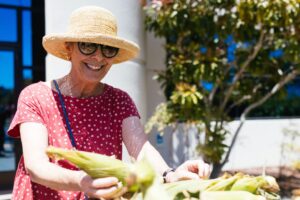 network of 350 partner organizations across San Francisco and Marin, the quality and scale of Food Bank operations has grown drastically. Through it all, Carolyn’s partnership has grown alongside it.
network of 350 partner organizations across San Francisco and Marin, the quality and scale of Food Bank operations has grown drastically. Through it all, Carolyn’s partnership has grown alongside it. 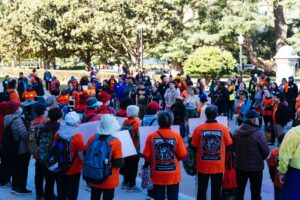 On April 30, our Policy and Advocacy team gathered in-person with the California Hunger Action Coalition (CHAC) in Sacramento to raise their voices for Hunger Action Day! Hunger Action Day is the single largest anti-hunger advocacy day in California, bringing advocates from across the state to the State Capitol to speak face-to-face with our policymakers.
On April 30, our Policy and Advocacy team gathered in-person with the California Hunger Action Coalition (CHAC) in Sacramento to raise their voices for Hunger Action Day! Hunger Action Day is the single largest anti-hunger advocacy day in California, bringing advocates from across the state to the State Capitol to speak face-to-face with our policymakers.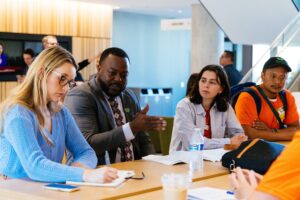
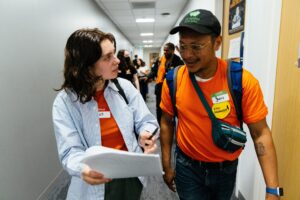 Reflecting on a jam-packed day of collaboration, Food Bank staff came away feeling energized to continue pushing for impactful, equitable policy.
Reflecting on a jam-packed day of collaboration, Food Bank staff came away feeling energized to continue pushing for impactful, equitable policy.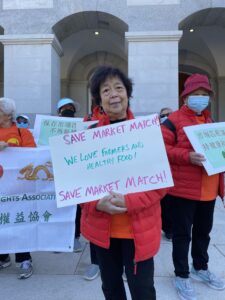 TNDC’s Tenderloin Chinese Rights Association.
TNDC’s Tenderloin Chinese Rights Association. 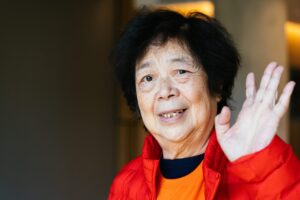
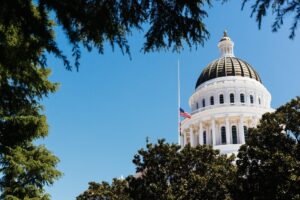
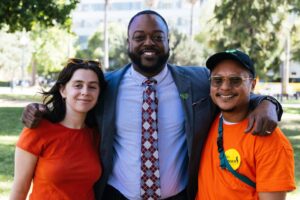
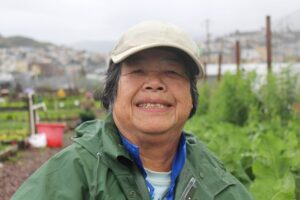 Ms. Chang finished loading up her cart with groceries and beckoned us over to view her most recent crop: a bountiful patch of cauliflower! Each plant boasted a still-growing cauliflower head, already larger than an outstretched hand.
Ms. Chang finished loading up her cart with groceries and beckoned us over to view her most recent crop: a bountiful patch of cauliflower! Each plant boasted a still-growing cauliflower head, already larger than an outstretched hand. 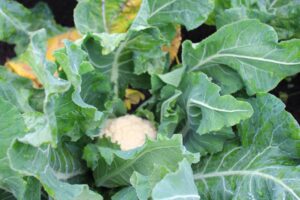
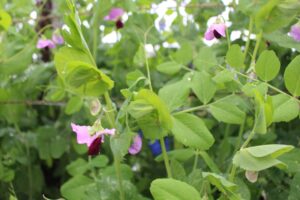
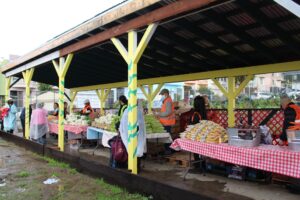 to close because of pandemic precautions, the pantry reopened with the support of the Food Bank back in February of 2023.
to close because of pandemic precautions, the pantry reopened with the support of the Food Bank back in February of 2023. 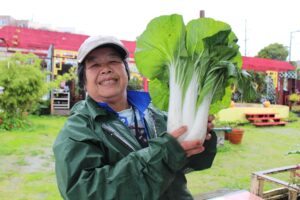 across San Francisco and Marin who are facing similar difficulties. On the Saturday we visited, volunteers laid out items like rice, bok choy, beets, carrots and celery farmer’s market-style, so each participant could take or decline items as they wished.
across San Francisco and Marin who are facing similar difficulties. On the Saturday we visited, volunteers laid out items like rice, bok choy, beets, carrots and celery farmer’s market-style, so each participant could take or decline items as they wished.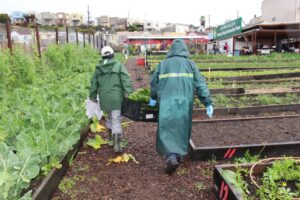 Upon immigrating to San Francisco from Guangzhou, China in the 80s, Ms. Chang worked as a sewist in San Francisco Chinatown’s garment factories
Upon immigrating to San Francisco from Guangzhou, China in the 80s, Ms. Chang worked as a sewist in San Francisco Chinatown’s garment factories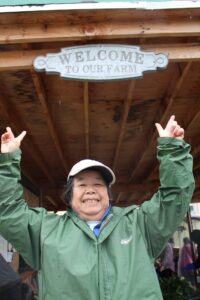 farm, and my family enjoys coming to these events. We throw parties, sing, dance, everything. Y
farm, and my family enjoys coming to these events. We throw parties, sing, dance, everything. Y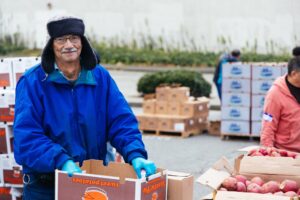 Volunteering with the Food Bank in May 2020 was really a no-brainer for Mitchell. As a retired government worker for various public health agencies, he already had a deep knowledge of epidemics and health outbreaks. Combined with the driving force of his faith, Mitchell knew he wanted to help his community out during a difficult and pivotal time.
Volunteering with the Food Bank in May 2020 was really a no-brainer for Mitchell. As a retired government worker for various public health agencies, he already had a deep knowledge of epidemics and health outbreaks. Combined with the driving force of his faith, Mitchell knew he wanted to help his community out during a difficult and pivotal time.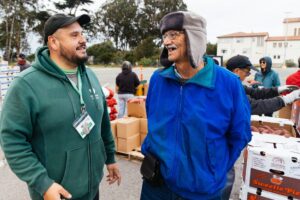
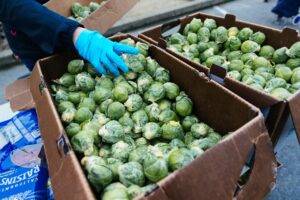 a pallet and put it on the table. And I will be 80 years old in July!”
a pallet and put it on the table. And I will be 80 years old in July!”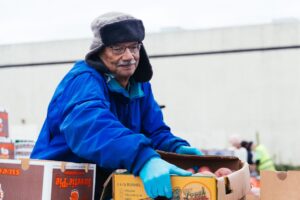 way to ensure we can continue meeting the immediate needs of our neighbors while strategically planning for more long-term, holistic solutions in the future. Thank you, Mitchell, for your dedication to ending hunger in San Francisco and Marin! We can’t do this work without supporters like you.
way to ensure we can continue meeting the immediate needs of our neighbors while strategically planning for more long-term, holistic solutions in the future. Thank you, Mitchell, for your dedication to ending hunger in San Francisco and Marin! We can’t do this work without supporters like you.
Share